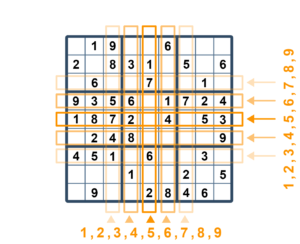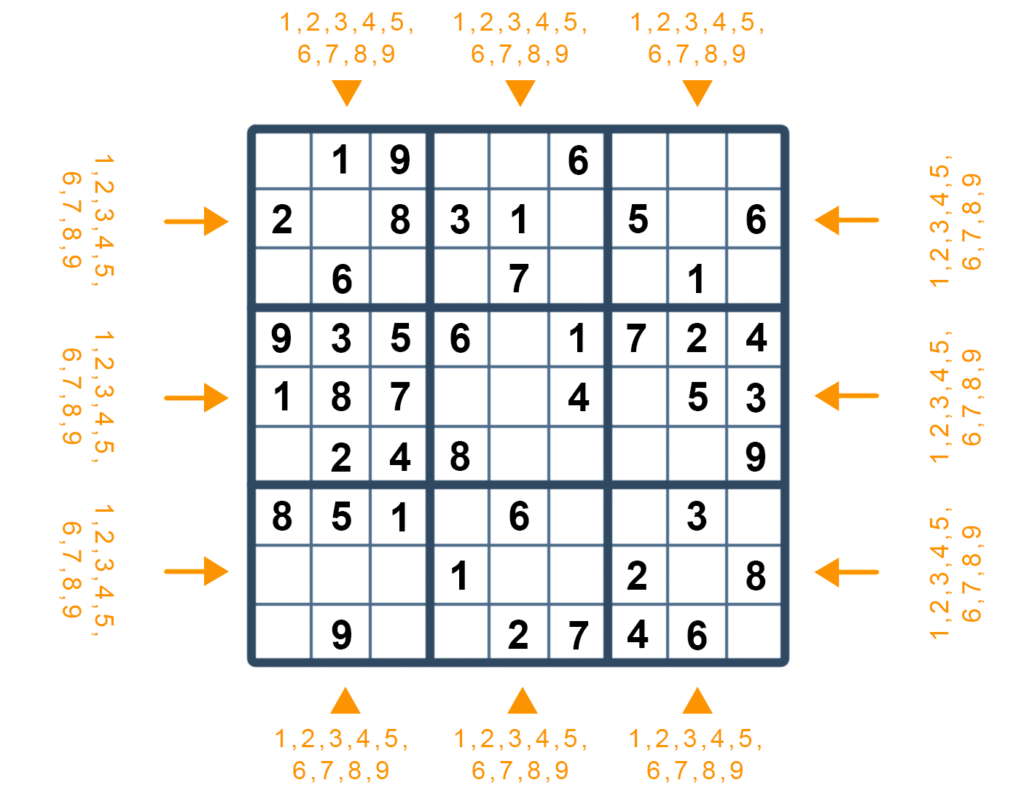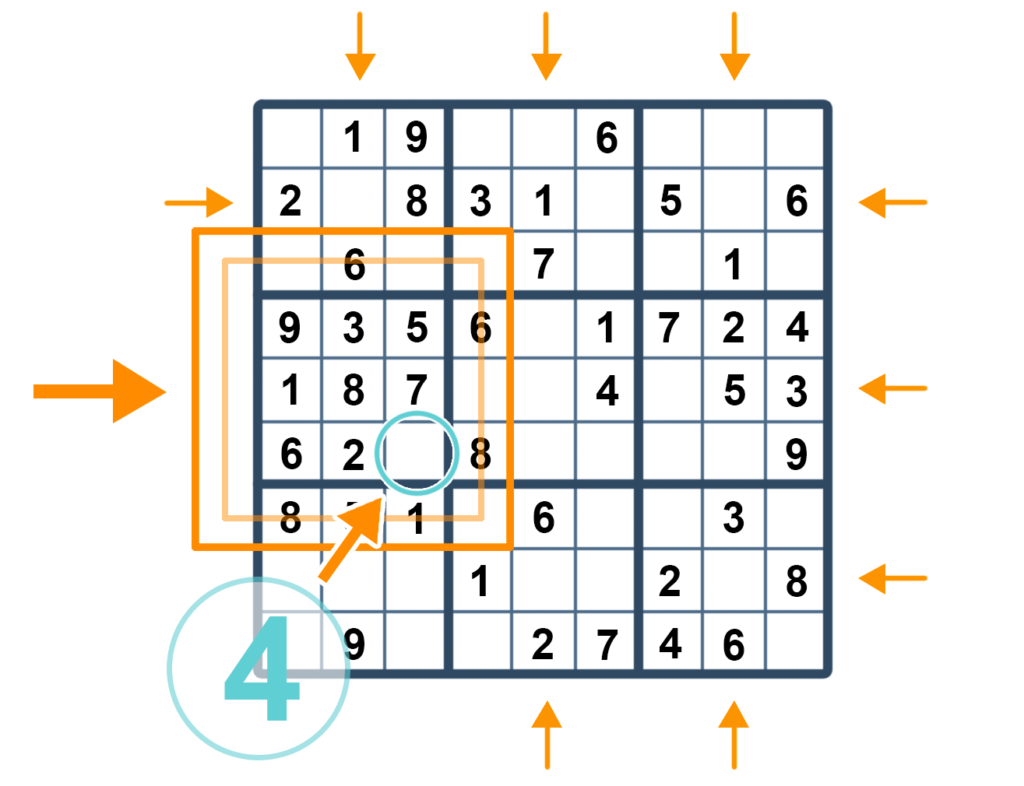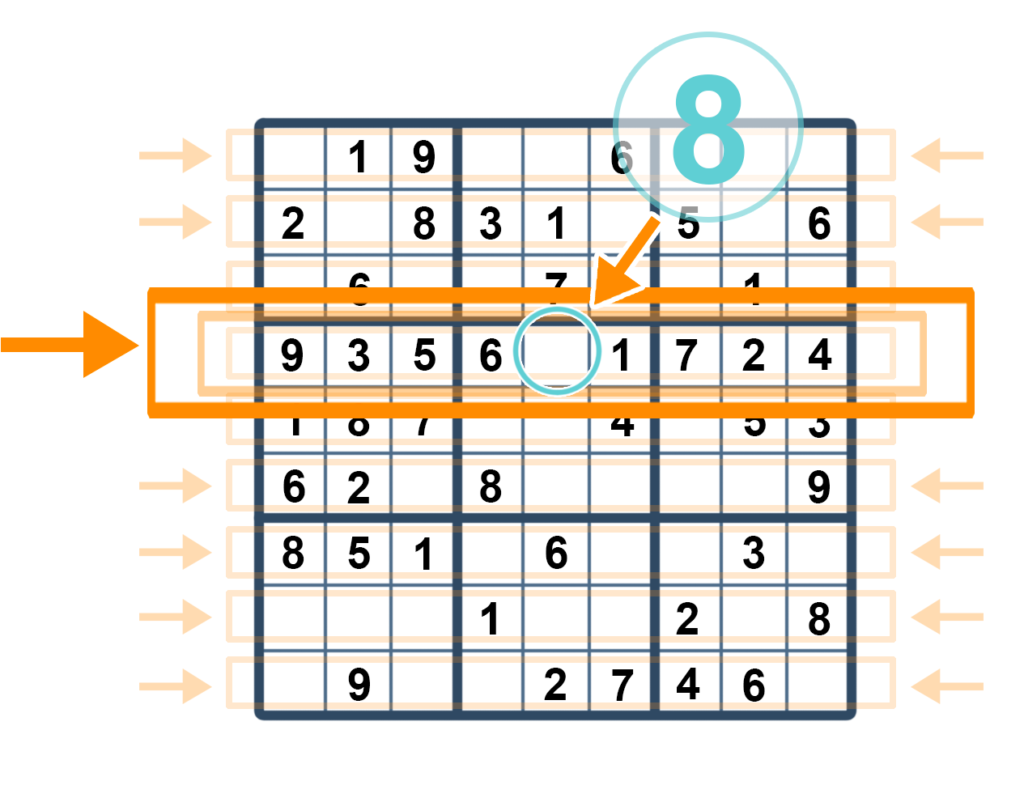How to solve Sudoku?
If you have a desire and interest in solving this type of puzzle, and you want to learn how to solve them, consider the main rules and patterns for solving. It is literally because of the content of the fundamentals of numbers, it may seem that Sudoku is a complicated mathematical problem, but mathematics is nothing in common. Figures are presented only for a more comfortable visual perception, they can be replaced with any shapes or letters and the principle of solving the puzzle will not change, it will only become more difficult to analyze the further process of solving, therefore numbers are the best option.
The main point for solving Sudoku is to put all the numbers in their places, but for this you need to analyze, because the numbers should not be repeated in the lines and columns, and also in one of the nine fields also can not be the same numbers. In order to finally grasp the meaning, it is necessary to start with simple tasks and only then move on to more complex ones, otherwise you can quickly get confused and burn out to this type of rebus.
The structure of the puzzle. In the classical form, Sudoku consists of a square divided into nine smaller identical squares, and they, in turn, are also divided into nine cells. In some cells, the numbers are initially inscribed, it helps to start solving, and the lighter the level, the greater the number of numbers present initially.
To facilitate visual sensitivity, the main field and large sections are shown in a large frame and the rest in a thin frame. In some cases, they also paint small cells through one, so the field does not merge or ripple in the eyes.

The principle of structure consists in horizontal rows and vertical columns. One of the main and most important rules in the solving of the problem is that they should not be repeated when arranging the numbers in a row and in a column. If two or more digits are the same, it means that a mistake has been made, the solution should be reconsidered.

The location of the numbers in one of the nine sectors. As in the previous rule, one sector of nine squares cannot have the same digits. The main thing to understand is that the sector consists of nine cells, and must be filled with numbers from one to nine. If, for example, there is a number five in the sector, the second one cannot be there anymore.
Sudoku is better off using a pencil for the solution. If the puzzle is solved in a printed edition, it is more comfortable to use a pencil than a pen, so in case of an error, you can fix it and continue to solve it.
Special attention to large sectors. When solving the puzzle, it is necessary to periodically review all the sectors, with the decision it happens that one sector does not have enough of one number, it is not difficult to calculate it, as there are already eight out of nine, you only need to calculate the number row and enter the missing one.

Special attention to the horizontal and vertical. Just like in the case of sectors, it is necessary to periodically look through rows and columns, and as the numbers are being solved, more and more rows and columns appear, and if there is a lack of one number, you can enter the missing number by simple logical thinking.

Filling in large sections by visual analysis. After a brief review, you should pay attention to the column or row of three large sections. Each of the sections may have the same number, but all of them must be located in a different plane. For example, in each section there is a number five, in order to check that all of them in a different plane, you can take a ruler and gradually moving it, to track the correctness of the location.

For a more comfortable solution, it is sometimes possible to change the direction of tracking and entering numbers, for example, if you initially started from the top, you can go down and if from the left, then go to the right area.

Group processing of numbers. Once the guessing skills become better to increase the speed of the solution, you can start working with groups of numbers. For example, in the process of solving some of the fields there are a lot of identical numbers in some of them, in this case, you should pay attention to this. This combination will help to fill in the rest of the cells with the same numbers, applying the exception rules described above.

Advanced Sudoku techniques
To begin with, it is necessary to evaluate and analyze all Sudoku fields, each column and row. Or analyze blocks of three small squares horizontally or vertically and each square separately. Choose any number that you think you can insert into all three squares.
For example, you liked the number seven. Determine which squares already have it, use the information you analyzed, and think about where else you can put it, so you have it in every small square, in every column, and in every row.

It's better to start with the expected numbers in pencil. Since the puzzle may be more complex, and the right decision will not come at once, each cell may have a few presumptive numbers. If you have not definitely decided that the number is in a certain cell, then put the numbers in pencil in the corner of the cell. There can be two or three such supposed figures.
In the process of solution there may be such a situation that a certain cell can be put only one number, and this will be the final solution, which, without hesitation, can be inscribed in the cell.

Go back to the other cells all the time. As you solve the puzzle, carefully analyze the entire field, each column and row individually and return to the cells in which you have not entered anything or have put the expected number. Since the process of filling cells with other numbers, you can see the right solution for an empty cell and immediately write the right number into the cell.
When you return to the empty cells and double-check them, use the above techniques and you will solve any puzzle.

